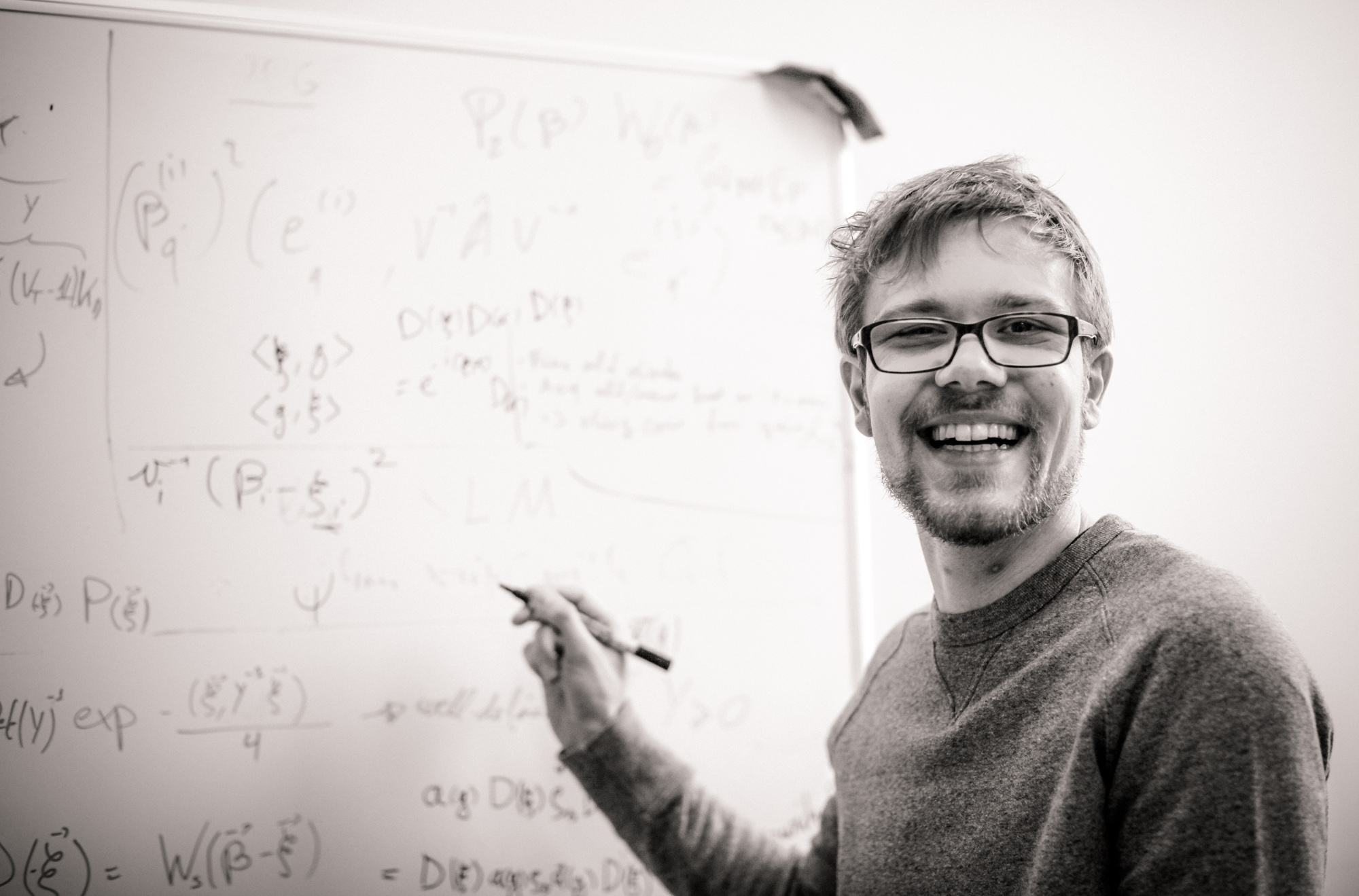
Contact
Selected Publications
- M. Walschaers, Non-Gaussian Quantum States and Where to Find Them, PRX Quantum 2, 030204 (2021).
-
U. Chabaud and M. Walschaers, Resources for Bosonic Quantum Computational Advantage, Phys. Rev. Lett. 130, 090602 (2023)
-
G. Sorelli, M. Gessner, M. Walschaers, and N. Treps, Quantum limits for resolving Gaussian sources, Phys. Rev. Research 4, L032022 (2022).
Bio
Current work
Non-Gaussian quantum correlations
In continuous variable systems, quantum correlations have been studied in great detail for Gaussian states. Many of the Gaussian techniques can be applied to also detect certain instances of quantum correlations in non-Gaussian states. However, non-Gaussian states provide much more structure than what can be captured in a covariance matrix. In our group, we try to understand quantum correlations in non-Gaussian states exactly where Gaussian techniques fail. This notably leads us to investigate quantum states with entanglement that survives in every mode basis or under every Gaussian unitary transformations.
Techniques used: (Quantum) Fisher information, Wigner functions, stellar representation, convex analysis, neural networks, …
Quantum computational advantages
In some recent work, we showed that any boson sampling setup can be strongly simulated by one of several coherent state samplers. This allows us to study the resources needed for reaching a quantum computational advantage all on the level of the state. Understanding the hardness of boson sampling problems thus boils down to understanding for which quantum states it is computationally hard to sample from the Husimi Q-function. We use this approach to study the physical resources that are required to reach a quantum computational advantage with bosonic systems.
Techniques used: Non-Gaussian entanglement, coherent state sampling, stellar representation, Markov chain, …
Quantum(-inspired) parameter estimation
Quantum metrology is a promising avenue for finding practical applications for quantum technologies. However, it also provides us with a rigorous framework to analyse and benchmark classical measurement schemes. In the past decade, this led to the discovery that even for passive imaging, the Rayleigh limit is -in fact- not a limit at all. In a combined effort between theory and experiment, we aim to develop practical techniques for parameter estimation and hypothesis testing in imaging problems. In the long run, we hope to push some of these ideas further to also explore the resourcefulness of genuine quantum features such as Wigner-negativity, stellar rank, and non-Gaussian entanglement.
Techniques used: Spatial mode decomposition (SPADE), method of moments, (quantum) Fisher information, …
Previous work
PhD work
Mattia Walschaers got his PhD from the universities of Freiburg (Germany) and Leuven (Belgium) for a cotutelle project, supervised by Andreas Buchleitner and Mark Fannes. His work initially focused on the role of quantum effects in photosynthesis, where he developed analytically solvable toy models to better understand the role of disorder in coherent transport of photosynthetic excitons. Later on, his attention shifted to dynamical features of many-particle systems and he spent a big part of the final years of his PhD project working on many-particle interference a phenomenon which induced by indistinguishability of quantum particles. This ultimately led to the development of an experimentally implementable statistical benchmark for boson sampling.
The resulting dissertation was published as a book in the Springer Theses series, and it was also one of the four nominees for the SAMOP dissertation prize of the German Physical Society.
Postdoc
From 2016 until 2019, Mattia was a post-doctoral researcher in multimode quantum optics group of the Laboratoire Kastler Brossel, where his research interests shifted to continuous-variable quantum optics and quantum information. During his postdoc, most of his attention is devoted to understanding multimode photon addition and subtraction. Between May 2018 and October 2019, Mattia was funded by a research fellowship from the German Research Foundation (DFG).
